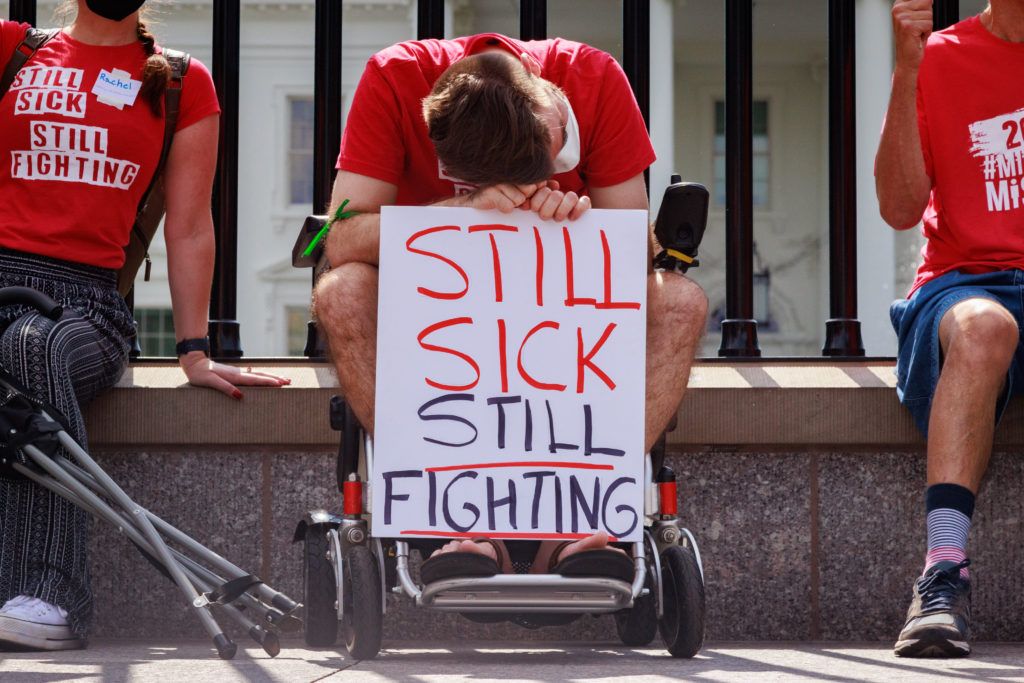These 12 symptoms may define long COVID, new study finds
For the millions who have been struggling with a baffling illness in the last few years, a recent study on long COVID could finally be a step toward treatment. At the same time, some experts caution that this new sketch of possible symptoms should not be mistaken for a tool that patients can use to diagnose themselves.
More than 100 million people in the U.S. have been sick with COVID, according to a recent survey from the Centers for Disease Control and Prevention and the Census Bureau. Of those who were sick, an estimated 15 percent developed prolonged symptoms linked to long COVID, often disrupting their lives and perplexing health care providers.
For this study published in JAMA, a team at Massachusetts General Brigham analyzed self-reported survey responses from nearly 9,800 patients, who described 37 different symptoms of long COVID six months or more after infection. Taking those symptoms, researchers then developed a scoring system. If a person’s composite symptom score reached a threshold, they were considered “positive” for long COVID (or postacute sequelae of Sars-COV-2 infection), the authors said.
According to that research, the hallmarks of long COVID include:
post-exertional malaise (i.e. symptoms that worsen after minor physical or mental activity)
disruption of smell and taste
chronic cough
brain fog
thirst
palpitations
chest pain
fatigue
diminished sexual desire
dizziness
gastrointestinal issues
abnormal movements such as tremors
Then, researchers analyzed reported symptoms alongside each patient’s history of infection and vaccination, eventually sorting patients into four different clusters of symptoms and severity. For individuals who had been infected with COVID more than once and had not received their full primary series of vaccine doses, the authors found evidence of worse outcomes.
READ MORE: ‘Why aren’t you taking care of us?’ Why long COVID patients struggle for solutions
“We see this as a critical first step to coming up with a common language, a unified strategy for identifying people who have long COVID,” said Dr. Andrea Foulkes, principal investigator and lead author for the study.
Throughout the pandemic, the lack of evidence-based criteria has put both health care providers and patients at a disadvantage. Physicians and researchers alike have chased what felt like a moving target of evolving variants and illness as they tried to better understand and mitigate the virus and its effects. Patients with long COVID often felt as if they were adrift in the health care system, forced to advocate for themselves while teaching clinicians about the realities of their disease.
Since its release, this new research has attracted criticism. Some COVID experts have expressed concern that the public may confuse these 12 symptoms as criteria for diagnosing a person with long COVID. But this study’s findings are “most useful as a clinical research tool,” said Dr. Tanayott Thaweethai, one of the study’s co-authors. In other words, more research is needed.
For individuals who had been infected with COVID more than once and had not received their full primary series of vaccine doses, the authors found evidence of worse outcomes.
In 2021, the National Institutes of Health established the $1 billion RECOVER initiative to better understand long COVID. Those funds erected more than 80 clinic sites in 33 states and have enrolled more than 13,000 adult patients. As part of the initiative, researchers asked patients a series of questions, conducted tests and took blood samples so they could examine how long COVID manifests, who is at risk for severe infection and long-standing effects, and why.
But those patients did not necessarily receive treatment. Many now describe themselves as guinea pigs for medical researchers, and have felt disappointed, if not betrayed, that long-held promises have not yet manifested into relief of their symptoms or the return of normal life.
Critics of the new study have also argued the symptom ranking system appears to prioritize long COVID effects such as loss of taste and smell over more life-altering outcomes, such as fatigue and dizziness that can set in after walking a few steps or sitting up.
“Symptoms with higher scores are not necessarily more prevalent or more severe than those with lower scores,” said Thaweethai, a biostatistician at Massachusetts General Hospital and an instructor of medicine at Harvard Medical School, in a written statement.
READ MORE: Should I get the new COVID-19 booster? Here’s what you need to know
For long COVID patients like Peter Paz, 44, of Wells, Maine, this study offers a chance for him to focus more on his health and less on educating “every single new doctor” he encounters about his symptoms, how they link to long COVID or even what long COVID is.
“There’s nothing standardized for us. There are people out there who have long COVID and don’t even know it,” he said.
Since Paz became sick with COVID in February 2020, he has endured ailments such as an aching tongue and extreme fatigue without much clarity – “an absolute struggle.” If, that summer, he had been able to point to a list of symptoms when talking to his health care providers, Paz said, “It would have changed my life.”
Since the U.S. lifted its public health emergency for the coronavirus pandemic on May 11, Paz said he felt like long COVID patients like himself were “being left behind.” But now, this list of symptoms – however preliminary – gives him hope.
Source: PBS NewsHour


